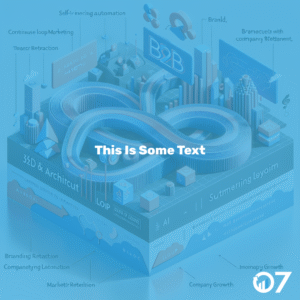Digital content management benefits businesses by streamlining content organisation and boosting productivity. Read on to discover how it can transform your team’s workflow.
What is Digital Content Management?
Digital content management involves the systematic organisation, storage, and retrieval of digital content. This includes documents, images, videos, and other multimedia assets. The goal is to make it easier for teams to access and use content efficiently.
Why is Digital Content Management Important?
In today’s fast-paced digital world, businesses produce vast amounts of content daily. Without a proper management system, this content can quickly become disorganised, leading to wasted time and resources.
Key Benefits of Digital Content Management
1. Improved Organisation
With digital content management, all your content is stored in a centralised location. This eliminates the need to search through multiple folders or platforms to find what you need.
2. Enhanced Collaboration
Teams can collaborate more effectively with a digital content management system. Multiple users can access, edit, and share content simultaneously, ensuring everyone is on the same page. This fosters better communication and teamwork.
3. Increased Productivity
By reducing the time spent searching for content, your team can focus on more important tasks. Digital content management streamlines workflows, allowing employees to work more efficiently and productively.
4. Better Security
Digital content management systems often come with robust security features. These include user permissions, encryption, and regular backups. This ensures that your content is protected from unauthorised access and data loss.
5. Scalability
As your business grows, so does your content. A digital content management system can easily scale to accommodate increasing amounts of data. This means you won’t have to worry about outgrowing your current system.
6. Compliance and Governance
Many industries have strict regulations regarding data management and storage. A digital content management system helps ensure compliance with these regulations by providing audit trails and ensuring that content is stored securely.
How Digital Content Management Works
1. Content Creation
The first step in digital content management is content creation. This can include writing articles, designing graphics, or producing videos. Once created, the content is uploaded to the management system.
2. Content Organisation
After uploading, the content is organised into categories and tagged with relevant keywords. This makes it easier to search for and retrieve specific assets later on.
3. Content Storage
The content is then stored in a centralised repository. This can be a cloud-based system or an on-premises server, depending on your business’s needs. The storage system should be secure and easily accessible.
4. Content Retrieval
When you need to use a piece of content, you can quickly search for it using the system’s search functionality. The use of tags and categories ensures that you can find what you need without hassle.
5. Content Distribution
Once retrieved, the content can be distributed across various channels. This can include publishing it on your website, sharing it on social media, or sending it to clients. The system ensures that the content is delivered in the correct format and resolution.
Implementing a Digital Content Management System
Implementing a digital content management system can seem daunting, but it doesn’t have to be. Here are some steps to guide you through the process:
1. Assess Your Needs
Before choosing a system, assess your business’s specific needs. Consider the types of content you produce, the volume of content, and your team’s workflow. This will help you choose a system that best fits your requirements.
2. Choose the Right System
There are many digital content management systems available, each with its own features and benefits. Research different options and choose one that aligns with your business’s needs. Look for a system that offers scalability, security, and ease of use.
3. Train Your Team
Once you’ve chosen a system, it’s important to train your team on how to use it effectively. Provide comprehensive training sessions and resources to ensure everyone is comfortable with the new system.
4. Monitor and Optimise
After implementation, continuously monitor the system’s performance and gather feedback from your team. Use this feedback to make necessary adjustments and optimise the system for better performance.
Digital Content Management Benefits Conclusion
Digital content management offers numerous benefits for businesses, from improved organisation to enhanced collaboration and increased productivity. By implementing a digital content management system, you can streamline your team’s workflow and ensure that your content is always accessible and secure.
To learn more about digital content management and how it can benefit your business, visit our blog or contact us via email at info@07hm.co.uk or telephone 01702 410663. We’re here to help you unlock the full potential of your digital content.





